The Deep Way at The Landing Gallery

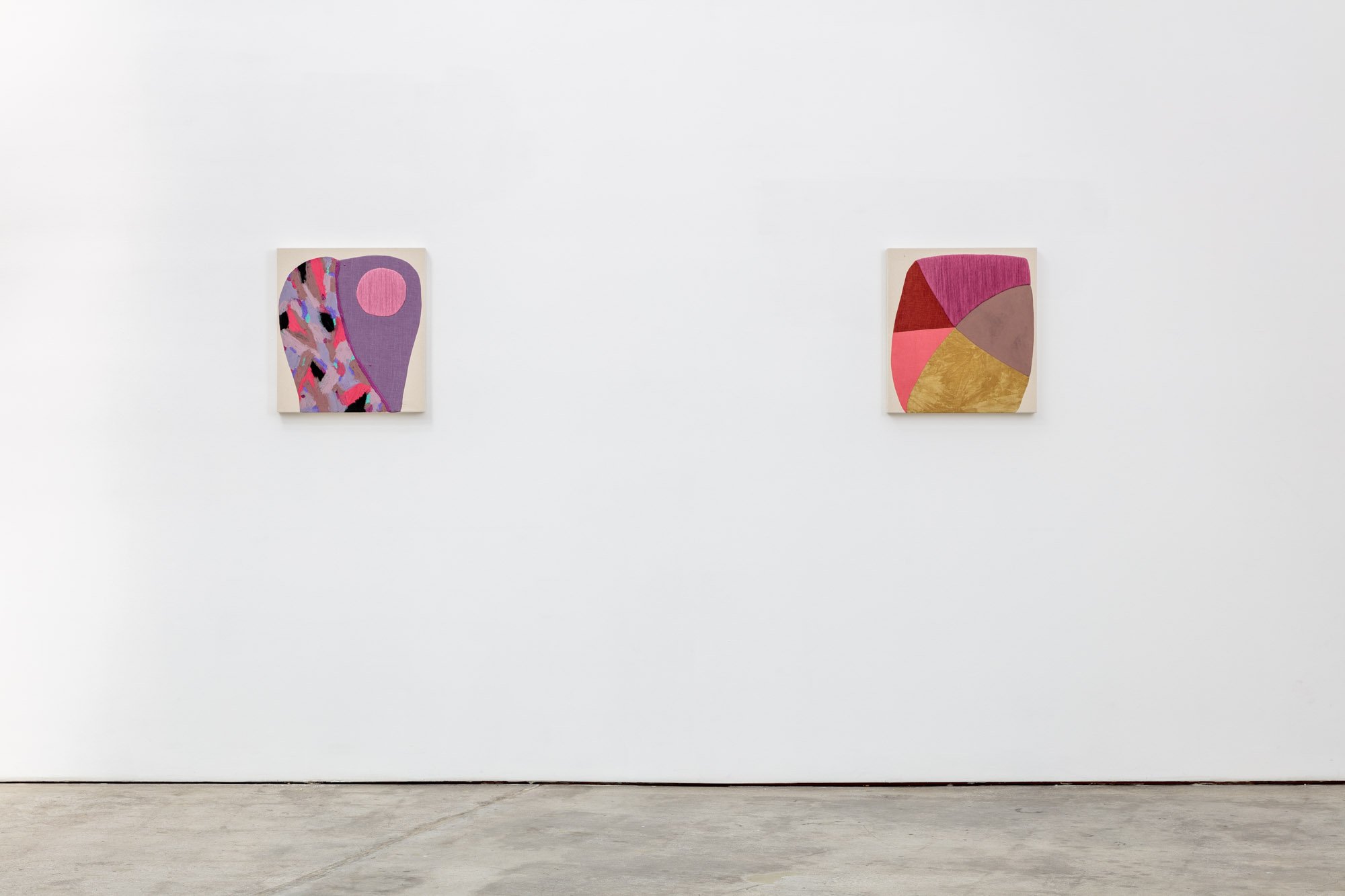
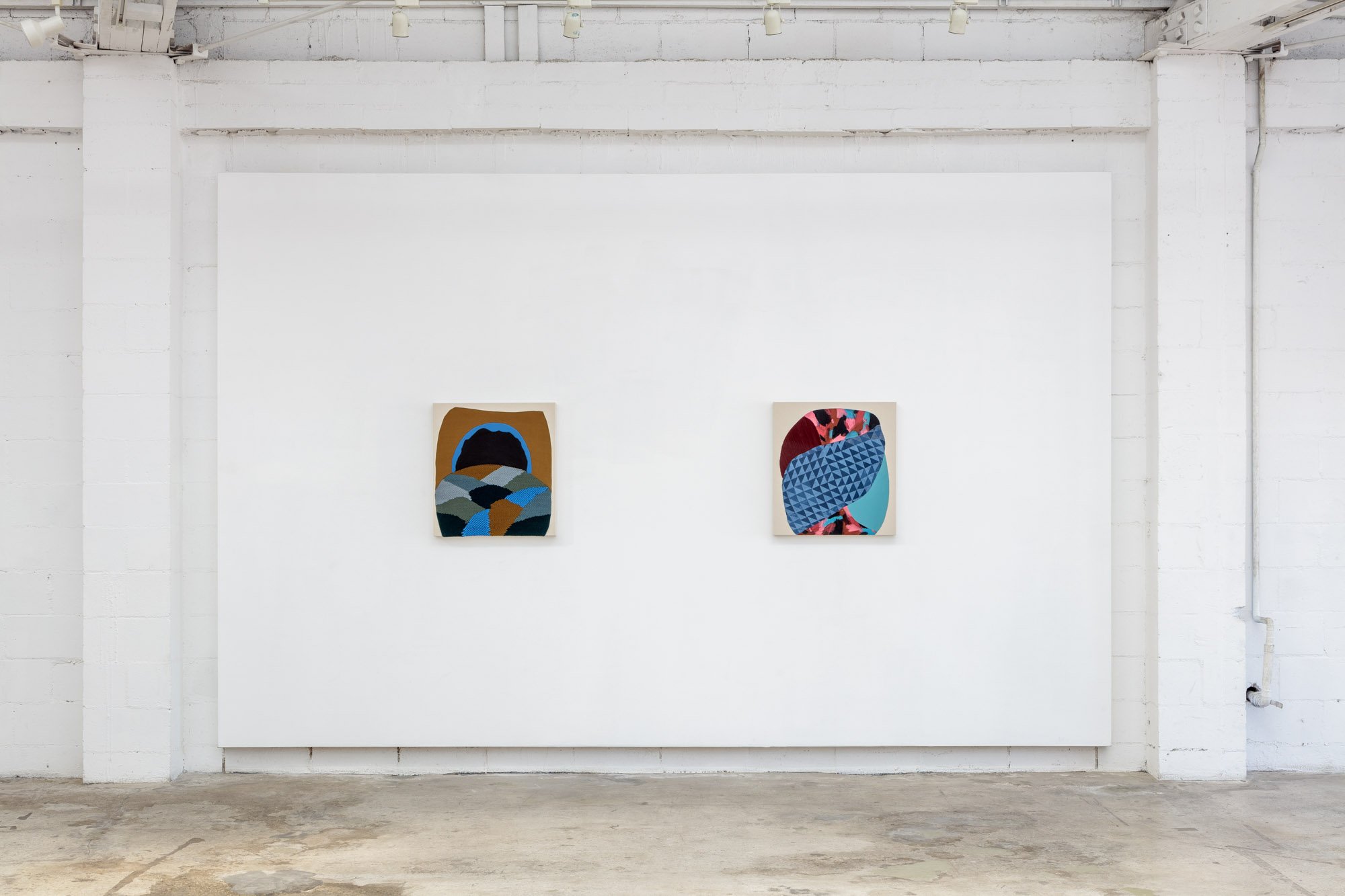


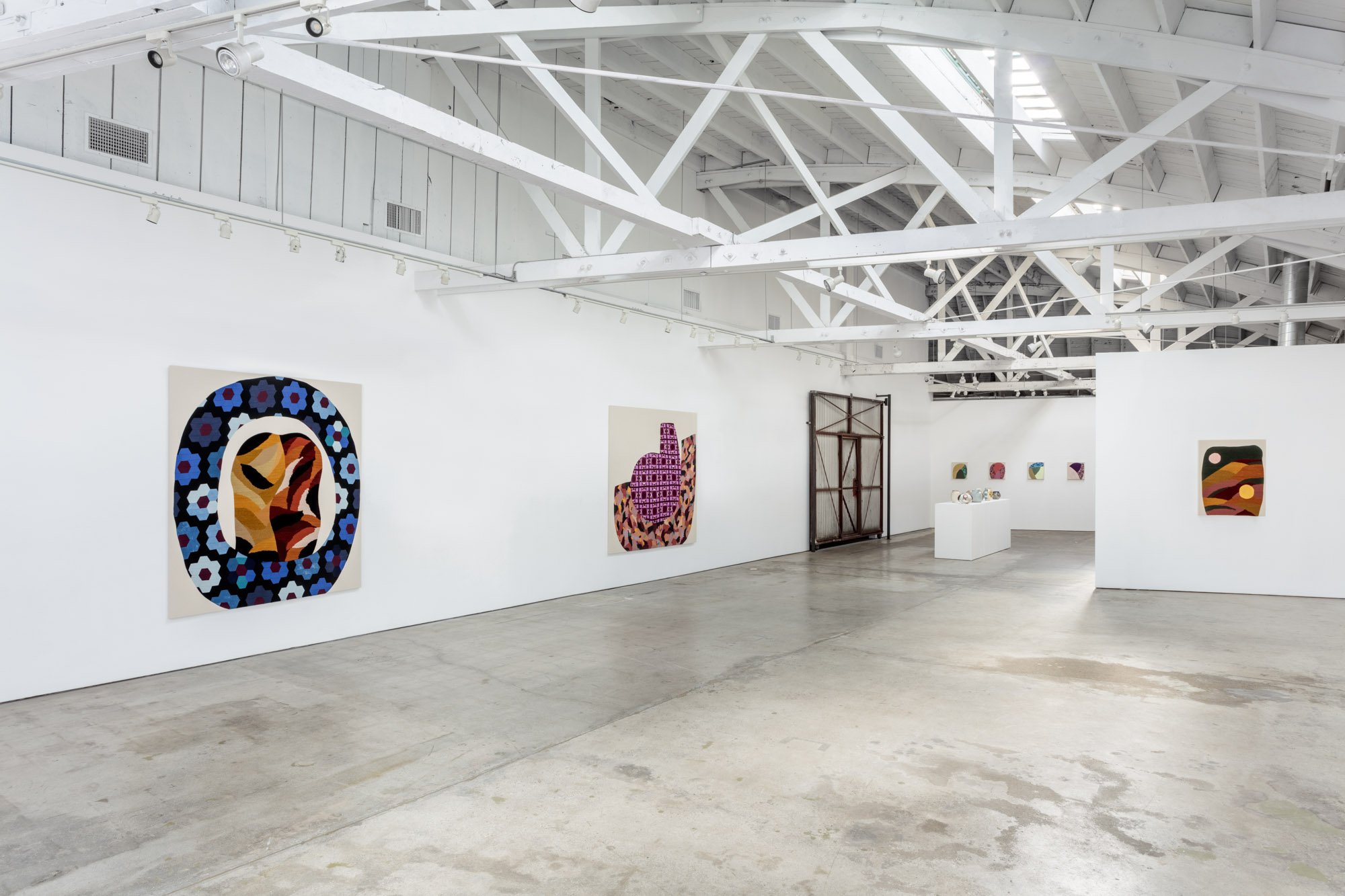

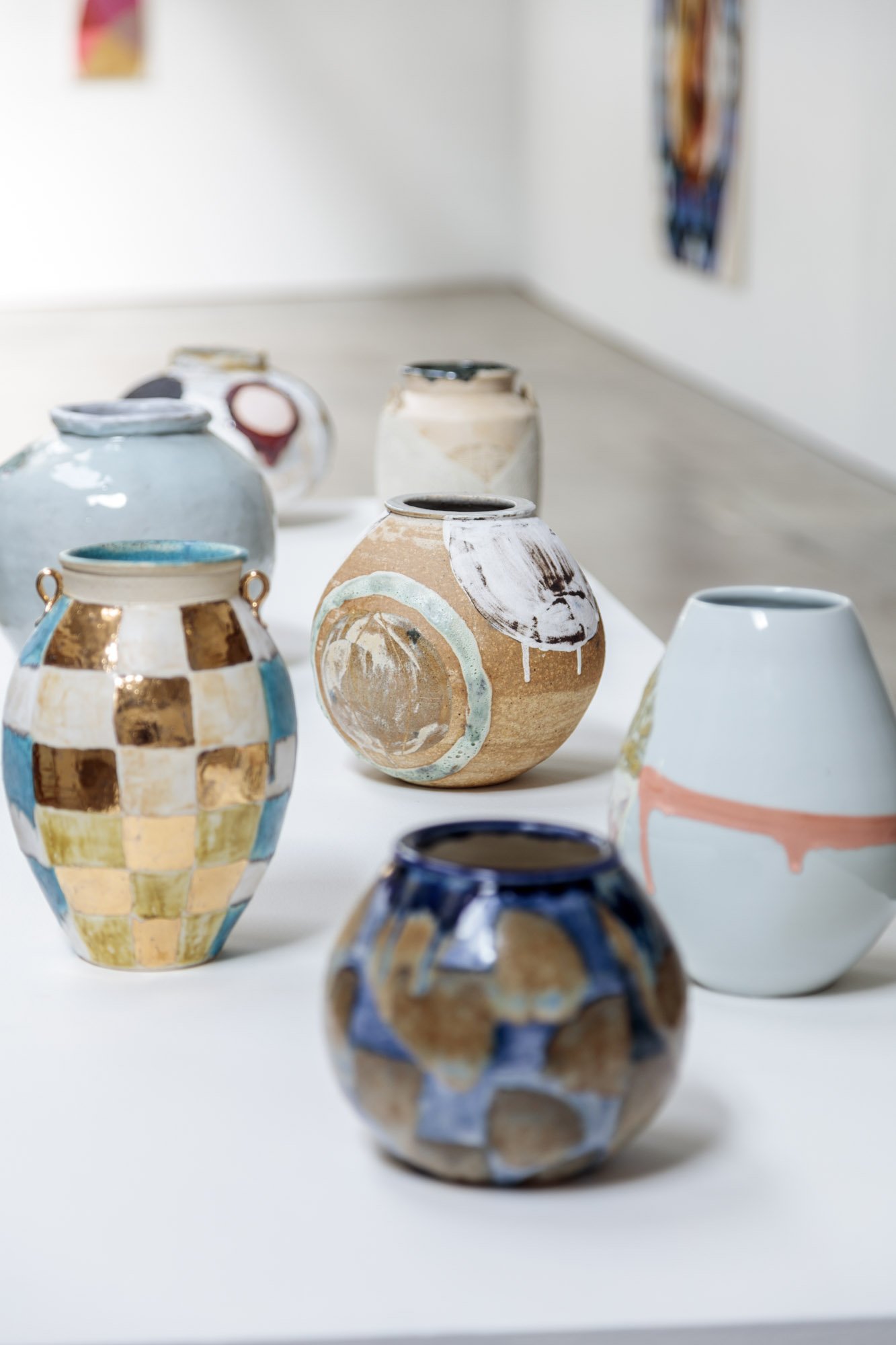

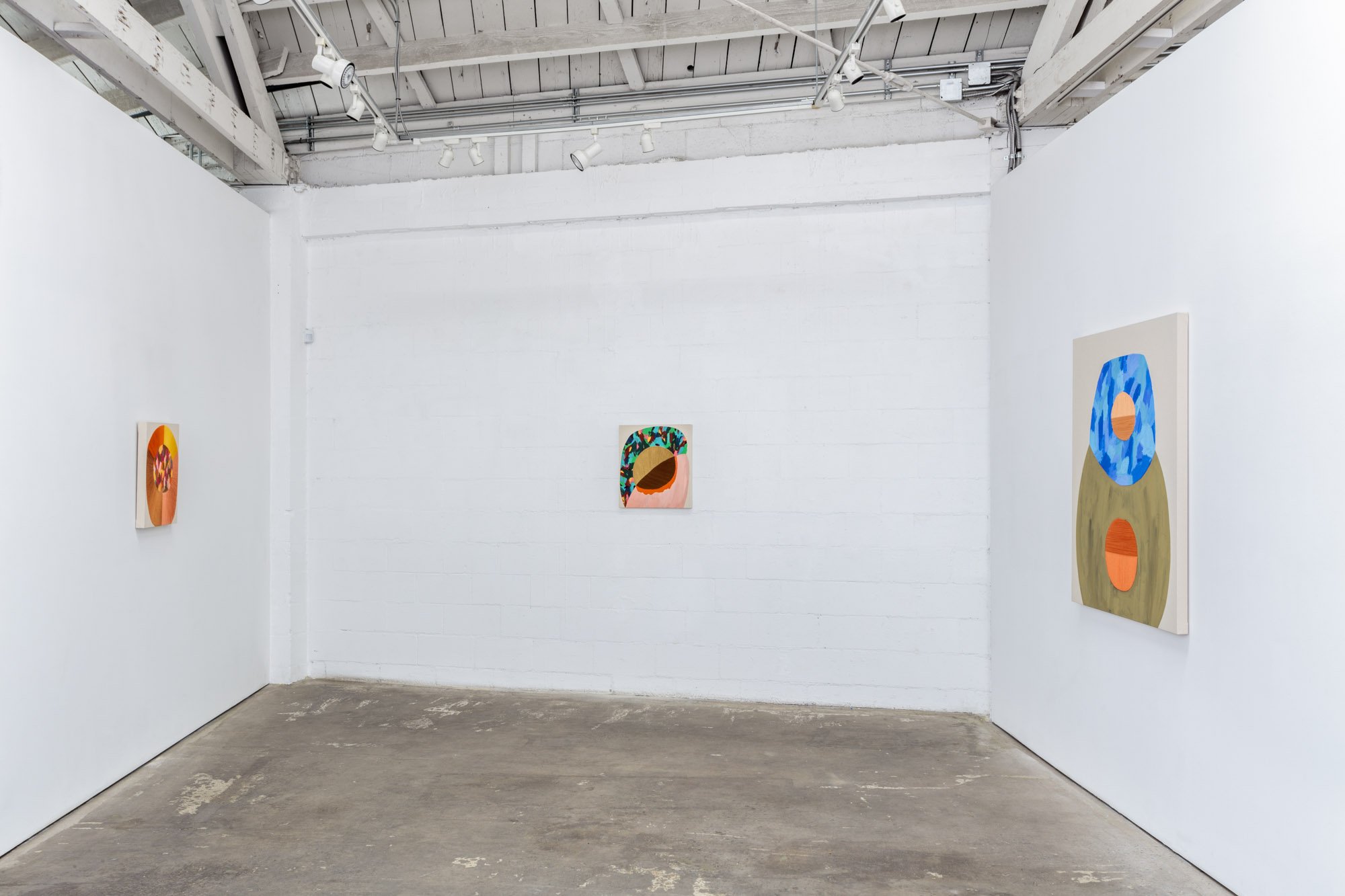
Press Release
This past summer in Maine, while being at the lakes, my two-year-old son would point out to the water and ask me to take him out “the deep way.” It struck me as one of those great things a child says that gives insight into where their mind is and how they are constructing the world, and their lack of understanding of risk and consequence. That sentiment and desire also felt connected to the sensibility of these past eighteen months, both globally, locally, and personally. The only way out has felt like having to confront everything the deep way.
— Amanda Valdez
The Landing is pleased to present The Deep Way, our second solo exhibition of paintings by Amanda Valdez. These abstract works, like those in Valdez’s first solo show with the gallery, Wild Child, combine sections of quilting, embroidery, oil stick and gouache into constructions on canvas that make apparent their maker’s hand. This new exhibition adds in sections of hand-woven tapestry that Valdez creates on a loom. In her weaving process, she uses a black warp, so that the colors of her yarns seem to glow forth from the dark background, and she mirrors that process in her areas of gouache painting, in which she layers a washy spread of gouache over a black gesso ground, which gives these painted sections a similar felt depth. In both the weaving and in these overlaid spreads of gouache, the dark under-layer becomes a kind of fertile soil from which these sections emerge, alive — organic in shape and unique in form, and making apparent the human process that built them.
Valdez begins her tapestry sections with a drawing process; she creates a pattern on paper, drawn out to scale, the shape and color shifts, and that drawing is then used as the road map on the loom. Once on the loom, the energy of the mark made in colored pencil is translated into fiber. In “The Deep Way,” a work on canvas that’s just over six feet square, there’s a shape at the center formed by two sections of different hand-woven textiles that are lovingly interacting — even embracing. These two interlocked forms — one of a textile in golden ochre and tan, one of a textile in burnt orange and brown — are framed by a loop of quilting, made of hand-dyed and commercially sourced fabric woven into a traditional pattern. As quilts are often crafted communally to be presented as a gift of love and support, often commemorating the birth of a child, a marriage, or a milestone, the protection and care of this quilted loop can be felt, just as the interlocking of the two woven shapes at the work’s center can be felt. The softness in the yarns and the fabric used deepens this quality. Though these textures are to be seen, not touched, their softness, and their comforting nature, is palpable. Similarly, the care taken in their making — and the artist’s own attention — is an invisible, but perceived, presence.
The names of many of these works — “New Mind,” “Portrait of My Mind,” “Sunset Mind,” “Wishful Thinking,” “Dusk Remembrance” — hint that a private mental process is being transitioned into the visible and tactile, carefully, and by hand. Ideas have moved into the language of color, soft texture, of visual relationship — into that which can best be intuitively understood.
One such work, “Sunset Mind,” incorporates dusk colors — red, salmon, rose, tan and mauve, rendered in fabric and embroidery — into a composition of what Valdez calls “hodgepodge triangles” that radiate from a center point. The varying textures and finishes present capture the movement and change as the sun sinks, but without the sun’s shape; instead, the work communicates with texture, sheen, and color experience — as an occurrence might be stored by the emotional body.
In “Portrait of My Mind,” we see a shape with two distinct parts, or hemispheres. In the upper quadrant, there’s a thick application of a textural oil stick, which rises in ridges in a vibrant riot of turquoise, forest green, salmon, grass, dandelion, rust, lavender and blue. These layered strokes build an irregular and passionate pattern. The bottom quadrant shows a light wash of pink gouache in a much quieter presentation. The work gains energy from the interplay between these two sections — perhaps two options, or two ways of seeing. At the center of the piece is an embroidered section: a kind of pit, or seed — perhaps something central that is being considered, or embraced.
The exhibition includes several points of particularly bright energy. In “Citrus Squeeze,” embroidered sections of lemon yellow, tangerine, grapefruit and tan radiate outwards with a kind of glow; the sheen on the threads themselves brings in a sunlight feel. At the center of the work, a round section of oil stick is a record of fast, high-energy strokes, made particularly electric by flashes of robin’s egg blue. This joyousness is also felt in “Sugar Bowl I,” where the colors of saltwater taffy — pinks and peaches, lavender, blue — combine with embroidered sections that interact lovingly, made of soft pink and lavender threads.
In addition to the arrival of hand-woven textiles, there are other elements in this show that are new. The small circular forms that began to appear in Valdez’s last solo show at the Landing have migrated to be within the larger shapes themselves; in the past, they were outside of them. This move, says Valdez, is “my way of exemplifying an internal gravity, what I’m holding within, and how it’s settled there.” New colors appear in this group of works, too. Says the artist: “I’ve found myself really wanting to mine more uncomfortable colors — tones and hues that force me into unexpected solutions to make the piece work; odd purples and greens, specifically. In the challenge to get along, color relationships can reveal a new harmony.” Also new is a group of ceramic vessels that, like the wall works, each have active, raised surfaces, and explore varying textures. These ceramic works were made in collaboration with artist duo Future Retrieval as part of a project titled "Vessel Cult," in which all three artists share ideas about form and surface, and respond to one another's aesthetic.
The experience of these works calls upon a fresh kind of intelligence — one evoked by texture, by memory, by feeling, by the lingering presence of the maker’s hand. In this realm of soft things, what is must be felt to be known.
Press
Amanda Valdez’s new works here—abstract canvases that incorporate paint, embroidery, sourced fabrics, and handwoven or hand-dyed textiles—recall the coastal sea stacks in the Pacific Northwest, where the artist grew up. Geomorphic shapes rise from the bottom edge of each picture but scarcely touch the surrounding borders. Some of these masses contain imagery of hills and fields, as in Autumn Flight and Dusk Remembrance, both 2021. Others are more biomorphic, including Sugar Bowl 2 and 4, both 2021—each one resembles a crotch and thighs in contrapposto.
Two larger works take a different tack: roughly six feet square, they depict one object enveloping another, like a womb sheltering a fetus (The Deep Way, 2021), or a figure settled deeply into a plush seat (A Sure Thing, 2021). Enlivened by fabric designs, the two canvases exemplify Valdez’s engagement in the legacy of the Pattern and Decoration movement. (The artist’s signature patterns also suffuse her 2018 collaboration with ceramics duo Guy Michael Davis and Katie Parker, aka Future Retrieval, in this show—eleven vessels on display suggest that these urns may have become a motif in the paintings.) But in counterpoint to these more orderly arrangements, Valdez inserts freewheeling elements: Collaged paper appears alongside passages of sewn thread or yarn; oil stick is applied in crudely discordant impasto and juxtaposed with loosely brushed gouache and areas of monochromatic thread whose tones vary, depending on the direction of the sewing and how the light hits it. These material collisions make the work unsettling and compelling in equal measure.
The exhibition’s title, “The Deep Way,” comes directly from the lips of the artist’s two-year-old. It signals the absorption of parenthood into her practice and advances Pattern and Decoration’s historical argument that domestic (or “feminine”) subject matter is important artistic content. Her son’s words referred to a lake in Maine, but in Valdez’s painting (the show’s namesake), the water becomes the amniotic fluid where we all began—inside our own mothers, of course, but even earlier, from the seas of Mother Earth herself.
By Daniel Gerwin